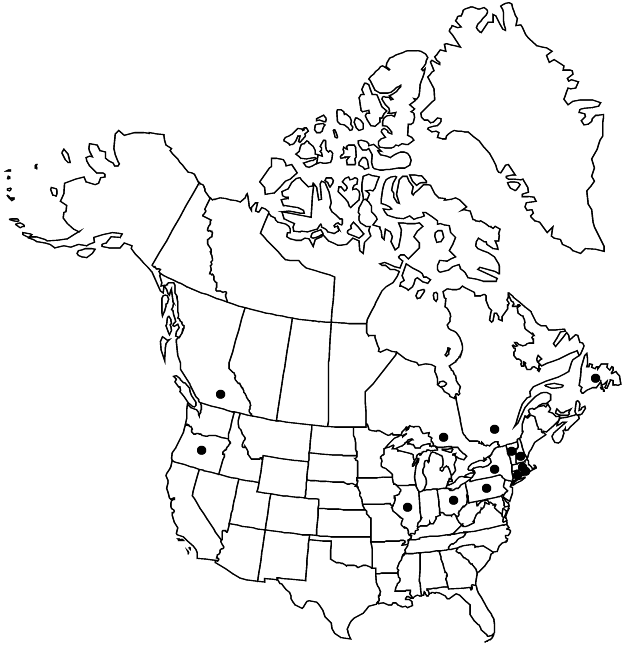Difference between revisions of "Sagina japonica"
J. Jap. Bot. 13: 438. 1937.
FNA>Volume Importer |
imported>Volume Importer |
||
| (5 intermediate revisions by 2 users not shown) | |||
| Line 8: | Line 8: | ||
}} | }} | ||
|common_names=Sagine du Japon | |common_names=Sagine du Japon | ||
| − | |basionyms={{Treatment/ID/ | + | |special_status={{Treatment/ID/Special_status |
| + | |code=I | ||
| + | |label=Introduced | ||
| + | }} | ||
| + | |basionyms={{Treatment/ID/Basionym | ||
|name=Spergula japonica | |name=Spergula japonica | ||
|authority=Swartz | |authority=Swartz | ||
| + | |rank=species | ||
| + | |publication_title=Ges. Naturf. Freude Berlin Neue Schriften | ||
| + | |publication_place=3: 164, plate 1, fig. 2. 1801 | ||
}} | }} | ||
|synonyms= | |synonyms= | ||
| Line 27: | Line 34: | ||
|elevation=200 m | |elevation=200 m | ||
|distribution=B.C.;Nfld. and Labr. (Nfld.);Ont.;Que.;Conn.;Ill.;Mass.;N.H.;N.Y.;Ohio;Oreg.;Pa.;R.I.;Vt.;e Asia;introduced in Mexico (Veracruz). | |distribution=B.C.;Nfld. and Labr. (Nfld.);Ont.;Que.;Conn.;Ill.;Mass.;N.H.;N.Y.;Ohio;Oreg.;Pa.;R.I.;Vt.;e Asia;introduced in Mexico (Veracruz). | ||
| + | |introduced=true | ||
|discussion=<p><i>Sagina japonica</i> was recently introduced in widely scattered locations in northeastern North America, and can be found especially in gravelly roadsides, walkways, and driveways. The plants tend to be much less robust and without distinctly succulent leaves.</p> | |discussion=<p><i>Sagina japonica</i> was recently introduced in widely scattered locations in northeastern North America, and can be found especially in gravelly roadsides, walkways, and driveways. The plants tend to be much less robust and without distinctly succulent leaves.</p> | ||
|tables= | |tables= | ||
| Line 45: | Line 53: | ||
-->{{#Taxon: | -->{{#Taxon: | ||
name=Sagina japonica | name=Sagina japonica | ||
| − | |||
|authority=(Swartz) Ohwi | |authority=(Swartz) Ohwi | ||
|rank=species | |rank=species | ||
| Line 60: | Line 67: | ||
|publication title=J. Jap. Bot. | |publication title=J. Jap. Bot. | ||
|publication year=1937 | |publication year=1937 | ||
| − | |special status= | + | |special status=Introduced |
| − | |source xml=https:// | + | |source xml=https://bitbucket.org/aafc-mbb/fna-data-curation/src/2e0870ddd59836b60bcf96646a41e87ea5a5943a/coarse_grained_fna_xml/V5/V5_303.xml |
|subfamily=Caryophyllaceae subfam. Alsinoideae | |subfamily=Caryophyllaceae subfam. Alsinoideae | ||
|genus=Sagina | |genus=Sagina | ||
Latest revision as of 22:10, 5 November 2020
Plants annual, glandular-pubescent. Stems ascending to spreading, much-branched, usually filiform, frequently glandular-pubescent distally. Leaves: axillary fascicles rarely present; basal frequently in tuft of ascending leaves, rosette rarely present, blade linear, 4–10 mm, succulent, apex apiculate, glabrous; cauline leaves conspicuously connate basally, forming shallow, scarious cup, blade linear, fleshy, apex apiculate, glabrous or rarely pubescent; proximal leaf blades 9–20 mm, becoming shorter distally, 4–7 mm. Pedicels slender, distal portion densely glandular-pubescent, becoming less densely glandular-pubescent proximally, proximal 1/4 usually glabrous. Flowers axillary, 5-merous; calyx glandular-pubescent basally; sepals elliptic to orbiculate, 2–2.5 mm, hyaline margins whitish, apex obtuse to rounded, glandular-pubescent, remaining appressed following capsule dehiscence; petals ovate to orbiculate, 1–2 mm, shorter than sepals; stamens 5 or 10. Capsules 2.5–3 mm, exceeding sepals, dehiscing ca. 1/4 length. Seeds dark brown, reniform to nearly globose, plump, abaxial groove absent, 0.4–0.5 mm, densely tuberculate or strongly pebbled (e North America).
Phenology: Flowering early–late summer.
Habitat: Dryish sites, waste places
Elevation: 200 m
Distribution

Introduced; B.C., Nfld. and Labr. (Nfld.), Ont., Que., Conn., Ill., Mass., N.H., N.Y., Ohio, Oreg., Pa., R.I., Vt., e Asia, introduced in Mexico (Veracruz).
Discussion
Sagina japonica was recently introduced in widely scattered locations in northeastern North America, and can be found especially in gravelly roadsides, walkways, and driveways. The plants tend to be much less robust and without distinctly succulent leaves.